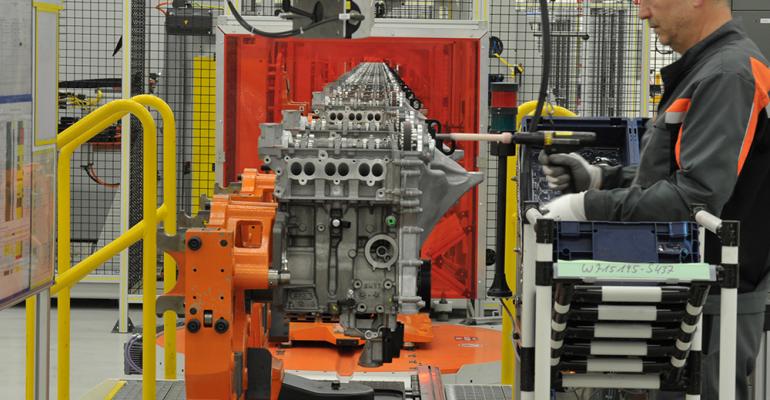Downsized, turbocharged engines are drawing complaints from consumers, but the issues reported likely more are the result of a lack of familiarity with the technology than any mechanical flaw, experts say.
Engine and transmission issues are on the rise, according to the J.D. Power Vehicle Dependability Study, which examines problems reported during the past 12 months by 41,000 original owners of ’11-model vehicles.
The decline in quality scores was more acute for vehicles with 4-cyl. engines, but complaints aren’t about vehicles breaking down on the side of the road, but rather poor performance, says David Sargent, J.D. Power vice president-global automotive.
“It is primarily things like engine hesitation, poor transmission shifts, check-engine lights coming on, and a lot of this we believe is caused by the automakers trying to squeeze every mile per gallon out of an engine,” he tells WardsAuto.
Sargent doesn’t reveal specific automakers targeted by the complaints, but there are a number of widely known issues with some technologies, such as Ford’s dual-clutch transmission dubbed PowerShift that owners complained shifted harshly.
But DCTs work differently than traditional automatic transmissions, and Ford claimed the PowerShift gearboxes performed as designed.
In J.D. Power’s Initial Quality Study of brand-new vehicles, DCTs fared poorly with buyers, Sargent says, noting it’s likely the technology will begin to show up on the VDS survey, as well.
“Consumers feel it’s an automatic transmission, but it reacts more like a manual and you don’t get that smoothness,” Sargent says.
Common complaints with turbocharged engines include “turbo lag,” or the lack of power in the low-rpm range when the turbocharger is spooling up.
“Consumers feel the engine is being starved,” Sargent says. “They put their foot down and nothing seems to happen, and transmissions shift up too quickly. It’s not the performance they’re looking for, and in some cases they think something is wrong.”
Most of the complaints stemmed from owners of midsize cars and small CUVs, vehicle segments that have been shifting from 6-cyl. to 4-cyl. mills, he says.
Owners who try to compensate for the lack of power typically are heavy on the accelerator, which negates the fuel-saving attributes of a downsized engine.
“So they can end up being disappointed with the performance and fuel economy, because they change their driving habits,” Sargent says, noting some consumers may not stick with a particular brand if they have a bad experience.
Despite complaints, its unlikely automakers will turn back to 6-cyl. engines and away from 4-cyl. turbocharged mills, says Mark Christie, vice president-engine business unit leader at Ricardo, a multi-industry consultancy.
“The trend for reduced cylinder count will continue,” he says. “I don’t see that changing.”
Although automakers are unlikely to reverse course, they will try to appease consumers by improving performance, Christie says.
“I think as the technology of turbocharging and engine controls advance, you’ll see improvements in those areas,” he says. “Automakers can get very close to making a 4-cyl. feel like a 6-cyl.”
Creating new control software to better emulate the feel of a larger engine is one solution automakers are adopting. In the future, additional advanced technology, such as electrification, will be used to upgrade performance.
“Ricardo has been working on a combination of a conventional turbo with an eBooster, which is an electrically powered supercharger that supplements the boosting of the turbo,” Christie says. “The benefits of that are you can fill in any torque holes that may exist with a traditional turbocharger.”
While new technologies will help mitigate some of the complaints, they likely will fade over time as consumers become used to downsized engines and other fuel-saving technologies, he says.
“There’s a difference in feel, but people will adapt.”




